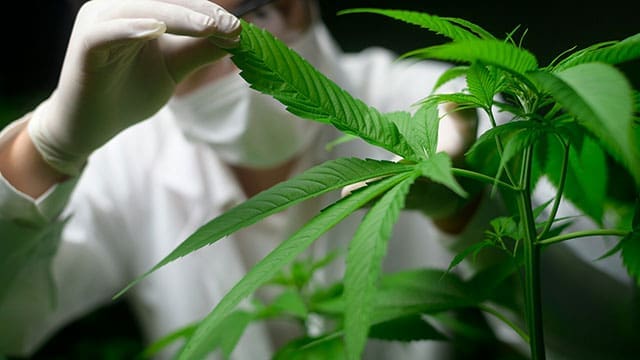Researchers are turning hemp into eco-friendly lyocell fibres
University of Alberta research is turning straw into economic gold, in the form of Canadian-made, environmentally friendly fibres that can be used for everything from dental floss to workwear.
The new project explores the most efficient way to process and manufacture specialized fibres from cellulose, a compound comprising linked sugar molecules found in all plants, says lead researcher Patricia Dolez, a textile scientist in the Faculty of Agricultural, Life & Environmental Sciences.
When fully developed, the work can benefit the environment, the economy and Canada’s textile manufacturing sector, she says.
“There’s a lot of overarching potential for this work to strengthen Canada’s bioeconomy by creating made-in-Canada fibres using local sources of cellulose in an environmentally friendly process.”
 Patricia Dolez |
 Lelia Lawson |
Experimenting with cellulose from Canadian-grown hemp, Dolez and her team plan to determine the best parameters for producing lyocell, a man-made fibre that can then be turned into textiles for a wide range of products.
The solvent used in producing lyocell is almost 100 percent recoverable, making it a sustainable way to manufacture textile fibres. The regenerated cellulose fibres also provide a use for agricultural straw that would otherwise be left in the field, notes Lelia Lawson, a PhD student in human ecology working on the project.
Hemp, in particular, offers “great opportunities as a local source of cellulose for the lyocell process,” she says. While traditional sources like eucalyptus trees and bamboo plants don’t grow in Canada, the country’s long daylight hours are good for growing hemp.
“It can grow up to 20 feet tall, which means more feedstock to work with. There’s a lot of biomass from this crop.”
The research began in 2023 in the U of A’s Biorefining and Conversions and Fermentation Laboratory and the Protective Clothing and Equipment Research Facility. The work is happening in two phases. The first phase is exploring how to enhance the process of manufacturing the cellulose filaments.
“When taking the cellulose and making a fibre out of it, we want to see how we can optimize the selection of blending different types of hemp to get the best performance in qualities such as strength,” says Dolez.
The researchers then add other ingredients to the cellulose to modify the fibre so it stands up under wet or dry conditions and is resistant to fire, UV rays, and shrinkage.
“We are guessing that pure cellulose won’t be good enough to meet specific requirements for strength to match these various qualities, so this research brings added value” for manufacturing a wide range of products, including workwear, protective clothing, facemasks, industrial filters and dental care products, she notes.
In initial control experiments, the researchers have already been able to create a lyocell fibre using cellulose from wood pulp, laying the groundwork for experimenting with hemp.
“We are very excited to show success with the method we’ve developed,” Lawson says.
“We’re still refining the process and learning new things, but since we have a proof of concept with existing wood pulp, we can proceed with experiments using hemp and other feedstocks, such as cellulose from used clothing.”
When it’s complete, the research will lead to patented technology that can feed Canada’s textile manufacturing sector, says Dolez.
“There is almost no fibre production in Canada, so this will help assure a domestically available supply.”
There’s also the potential to expand international markets for lyocell fibres, adds Lawson.
“Humans are starting to consume more cellulose-based textiles, mainly cotton, but that can only be grown in certain agricultural zones, so land is limited. Alternative forms of cellulose would help fill that gap, and hemp feedstock is a good opportunity because it can grow almost everywhere in the world.
“Once we are able to apply this technology, we could have quite a strong boom for potential end users, not just for textiles, but for anything from biofuels to food science.”
| By Beverley Betkowski
This article was submitted by the University of Alberta’s Folio online magazine, a Troy Media Editorial Content Provider Partner.
The opinions expressed by our columnists and contributors are theirs alone and do not inherently or expressly reflect the views of our publication.
© Troy Media
Troy Media is an editorial content provider to media outlets and its own hosted community news outlets across Canada.


